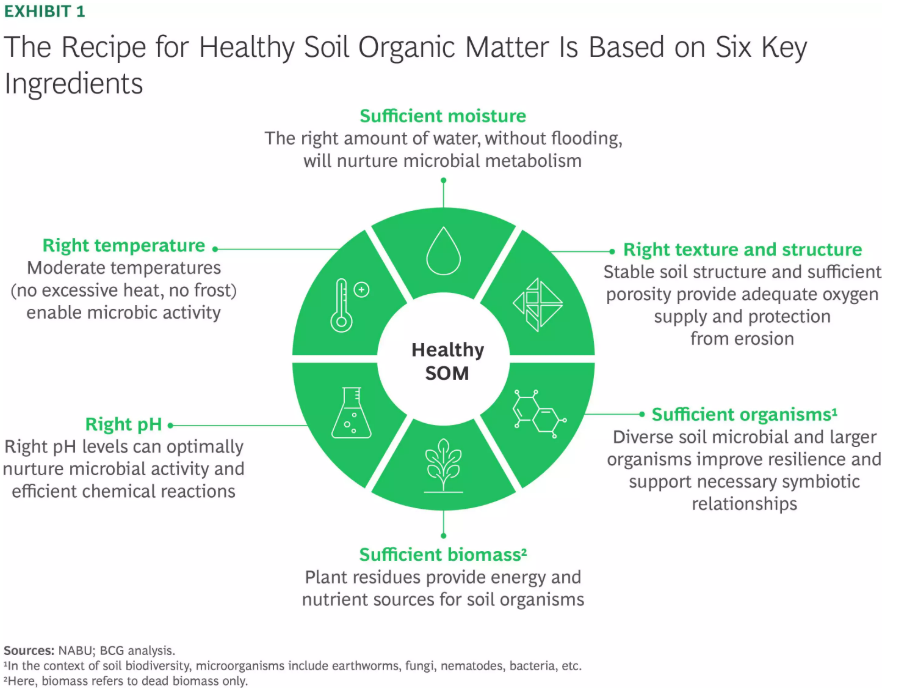Soil is typically made up mostly of inorganic matter—around 45% minerals, 25% air, and 25% water. The remaining 3% to 7%, depending on the type of soil, is made up of soil organic matter (SOM), which holds the key to healthy soil. SOM helps create a robust soil structure and protects against erosion. It’s what regulates and stores water, air, and nutrients and sequesters carbon. And it supplies the resources needed by the microbes and other organisms that increase the nutrients available to plants.

The amount and quality of the research that has been carried out on soil biodiversity to date lags far behind the major advances in above-ground plant research now taking place, from new breeding technologies to CRISPR-based gene editing. Further research is needed if we are to fully understand soil’s contribution to life on the planet—including greater analysis of SOM and its microbial processes and drivers as well as the relationship between above- and below-ground biodiversity, all tailored to regional specifics. It is also critical to conduct more field trials regarding soil biodiversity and to improve the quantity and quality of the data available in soil databases. Finally, better methods and standards for measuring and assessing soil biodiversity like DNA fingerprinting must be refined and advanced to create a common perspective on “what good looks like.”

